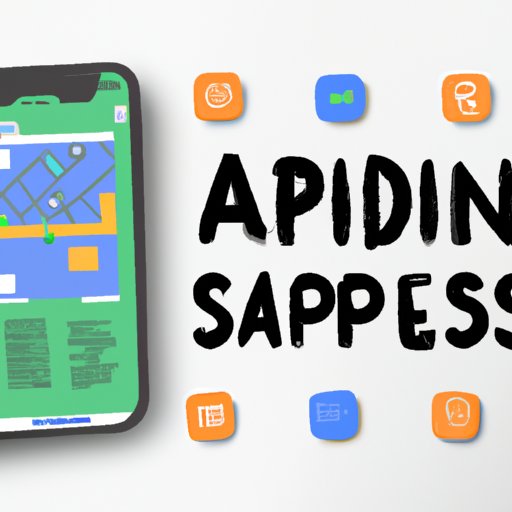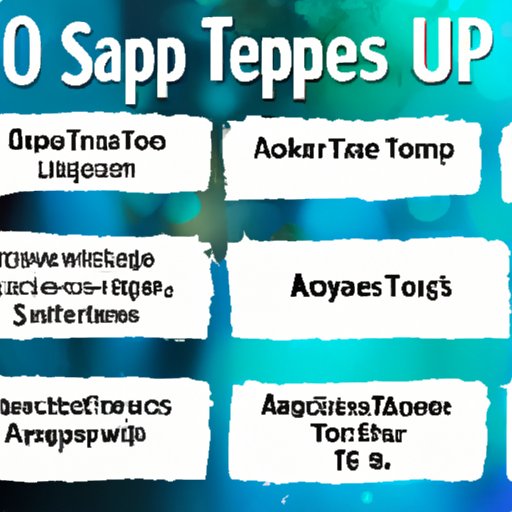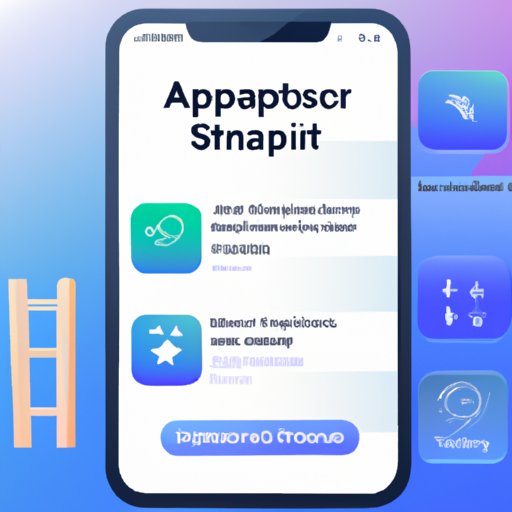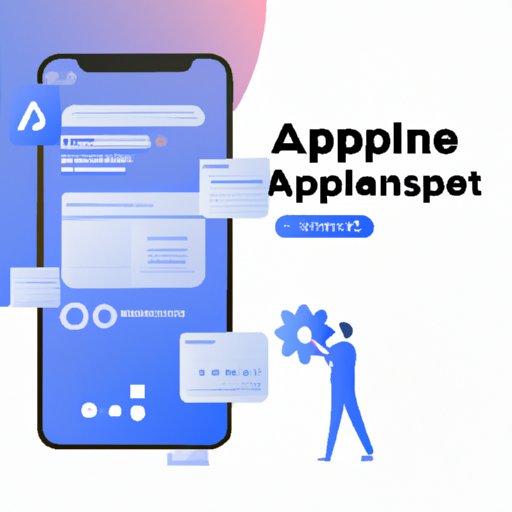Introduction
Making an app from scratch can be a daunting task, especially if you lack coding knowledge or experience in the field of app development. Fortunately, with the right guidance and resources, it’s entirely possible to create a successful app from start to finish. In this article, we’ll explore the process of making an app from scratch, from understanding the basics to launching your app on the app store.

Guide to Developing an App from Scratch: What You Need to Know
Before diving into the details, it’s important to understand the basics of app development. The process of creating an app can be broken down into several distinct stages: research, planning, design, coding, testing, marketing, and monetization. Each stage is crucial for ensuring the success of your app, so it’s important to take the time to do each step properly.
When it comes to researching your target audience and their needs, it’s essential to have a clear understanding of who your users are and what they’re looking for. This will help you create an app that meets their needs and stands out from the competition. Additionally, it’s important to establish your goals and objectives before beginning the development process. Ask yourself: what do I want my app to accomplish? How will it benefit my users? Answering these questions will help you stay focused throughout the development process.
Finally, it’s important to choose the right platform for your app. Popular platforms such as iOS, Android, and Windows offer different features and capabilities, so it’s essential to consider which platform will best suit your app’s needs.

10 Steps to Making a Successful App
Now that you understand the basics of app development, let’s dive into the 10 steps involved in creating an app from scratch.
1. Define Your App’s Features: The first step in creating an app is to define its features. This includes deciding what features you want your app to have, how those features will work, and how they’ll benefit your users. It’s important to keep in mind that the features you decide on should align with your goals and objectives, as well as the needs of your target audience.
2. Design the User Interface: Once you’ve determined the features of your app, you’ll need to design the user interface (UI). This involves creating the visuals, layouts, and navigation of your app. When designing your UI, it’s important to keep your target audience in mind, as well as any accessibility requirements.
3. Write Code and Build the App: Now it’s time to write the code and build your app. Depending on your coding experience and knowledge, this could involve learning to code from scratch or using a software like Xcode or Android Studio. If you don’t have any coding experience, you may want to consider hiring a developer or using app-building software.
4. Test and Debug Your App: After you’ve written the code and built your app, it’s important to test and debug it. This involves running tests on your app to make sure it functions properly, as well as fixing any bugs or errors. Testing and debugging is an important step for ensuring your app works properly before submitting it to app stores.
5. Submit Your App to App Stores: Once you’ve tested and debugged your app, you’ll need to submit it to app stores. Each store has its own submission process, so it’s important to familiarize yourself with the guidelines and requirements of each one. Additionally, some stores may require you to pay a fee in order to submit your app.
6. Market and Promote Your App: After submitting your app to app stores, it’s time to start marketing and promoting it. There are many ways to market and promote your app, such as through social media campaigns, influencer marketing, and paid advertising. Additionally, you can use analytics tools to track performance and optimize your marketing efforts.
7. Monitor Performance and Make Updates: Once your app is live, it’s important to monitor its performance and make updates as needed. This involves tracking user engagement and usage, as well as responding to feedback and resolving any issues. Additionally, you’ll want to regularly update your app to ensure it remains up-to-date and relevant.
How to Create an App Without Coding Knowledge
If you don’t have any coding knowledge or experience, don’t worry—it’s still possible to create an app from scratch. One option is to use app-building software, which allows you to create an app without having to write any code. These programs typically provide templates and drag-and-drop tools, making it easy to create an app even if you don’t know how to code.
Another option is to hire a freelancer or developer to create your app. This is a great option if you have specific requirements or need additional help. However, it’s important to do your research and make sure you’re hiring a reliable and experienced individual.

Strategies for Launching Your App on the App Store
Once you’ve created your app, it’s time to launch it on the app store. Here are some strategies for ensuring a successful launch:
Prepare Your App for Submission: Before submitting your app to the app store, it’s important to make sure all the necessary information is in place. This includes screenshots, descriptions, keywords, and other details. Additionally, you’ll need to create an Apple Developer account and sign up for an iTunes Connect account.
Optimize Your App for the App Store: To ensure your app stands out from the competition, it’s important to optimize it for the app store. This involves optimizing your app’s title, description, keywords, and screenshots to make it more visible and appealing to users. Additionally, you can use analytics tools to track performance and adjust your optimization efforts accordingly.
Set Up Your App Store Page: Once you’ve optimized your app for the app store, you’ll need to set up your app store page. This includes adding screenshots, descriptions, and other relevant information. Additionally, you’ll need to set up pricing and availability, as well as manage customer reviews and ratings.
Tips for Monetizing Your App and Generating Revenue
Once your app is live, you’ll need to decide how to monetize it and generate revenue. Here are some tips for doing so:
Offer a Free Version with In-App Purchases: Offering a free version of your app is a great way to attract users and generate revenue. You can then offer in-app purchases, such as additional features or content, to increase revenue.
Offer Paid Versions of Your App: You can also offer paid versions of your app. This could involve offering a basic version for free and a premium version for a one-time fee or subscription.
Utilize Advertising: Another way to generate revenue is to utilize advertising. You can display ads within your app or offer sponsored content.
Sell Merchandise Related to Your App: Finally, you can sell merchandise related to your app, such as t-shirts, mugs, and stickers. This is a great way to generate additional revenue while also increasing brand awareness.
Conclusion
Creating an app from scratch can seem like an intimidating task, but with the right guidance and resources, it’s entirely possible. By following the 10 steps outlined in this article, you can create a successful app from start to finish. From researching your target audience and defining features to testing and debugging your app, there’s a lot to consider when developing an app. Additionally, you’ll need to strategize how to monetize your app and generate revenue. With the right approach, you can create an app that stands out from the competition and meets the needs of your users.
We hope this article has provided you with the information you need to get started on your app development journey. For more resources and information, check out our blog post on App Development Tips and Strategies.
(Note: Is this article not meeting your expectations? Do you have knowledge or insights to share? Unlock new opportunities and expand your reach by joining our authors team. Click Registration to join us and share your expertise with our readers.)
